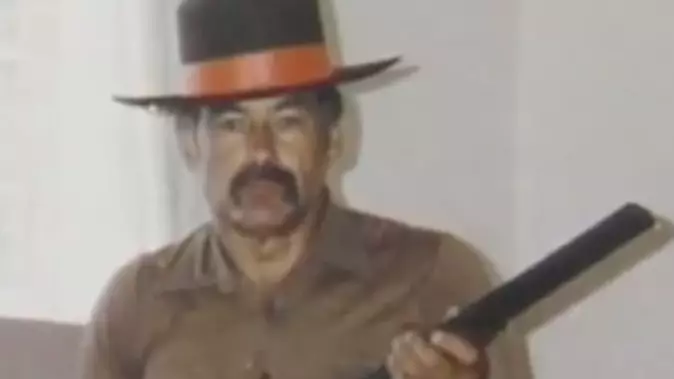
Ivan Milat was responsible for the brutal and savage murders of seven backpackers between 1989 and 1993.
The discovery of his first victims occurred in 1992, when runners came across the still decomposing remains of young British travellers Caroline Clarke and Joanne Walters in the Belanglo State Forest, New South Wales. Walters had been stabbed 21 times in her back and 14 times in her chest, with police determining that the wounds to her spine would have left her paralysed. Clarke had been shot in the face 10 times and detectives believe she was used as target practice.
Police combed through that part of the forest, but after five days ruled out finding any more bodies related to missing people cases. However, nearly a year later, a local came across a human skull and thigh bone in a remote part of Belanglo.
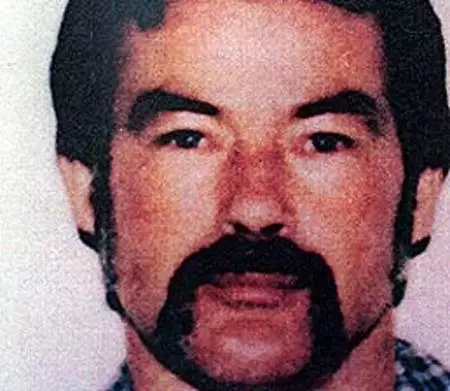
Ivan Milat. Credit:High Risk Management Unit, New South Wales, Australia
That led investigators to two bodies, Victorian couple Deborah Everist and James Gibson, who had been missing since leaving the state in 1989. It's believed that Gibson's upper spine was slashed with a large knife with the intention to cause paralysis. Everist was severely beaten, as her skull showed two fractures, her jaw was broken and she had knife marks on her forehead.
The next discovery happened a month later, when the skull of German backpacker Simone Schmidl was found in the same forest. Her spine was also seen to have stab wounds that deliberately paralysed her. Clothing was found at the scene, but it didn't belong to her. Instead, it belonged to Anja Habschied, another German backpacker.
Her remains were discovered, along with her boyfriend, Gabor Neugebauer, in a shallow grave 50 metres apart. Anja was found to have been decapitated, but her skull has never been found. Gabor, however, was shot six times in the head.
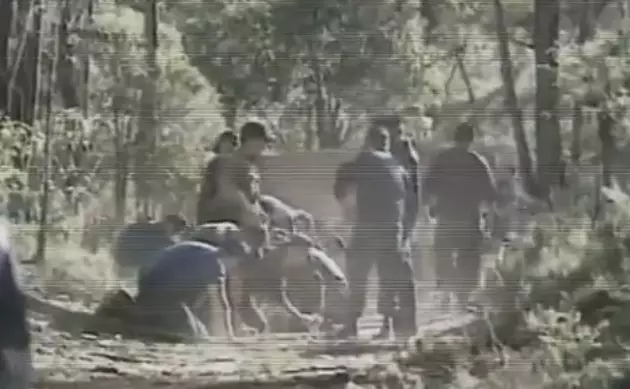
Officers searching Belanglo State Forest for the victims. Credit: Channel 9
Speculation was rising that Australia was in the grips of a serial killer, because the victims were all found in similar circumstances: face down with their hands behind their backs. Police compiled a list of 230 suspects, which was eventually narrowed down to 32.
Their investigation was significantly boosted when a man from the UK, Paul Onions, called police saying he was nearly the victim of a murder three years earlier in 1990. He said that while he was hitchhiking, he accepted a ride from a man who called himself 'Bill'. But the man pulled over, tied him up and pulled a gun on him. Onions managed to escape and found a passing motorist, who reported the assault to police.
It wasn't until 1994 that police began to zero in on Milat. He was on their list of suspects due to his time in prison as well as being charged in 1971 with abducting two women and raping one of them but those charges were later dropped. He also owned a property near the forest and acquaintances told police of his obsession with guns.
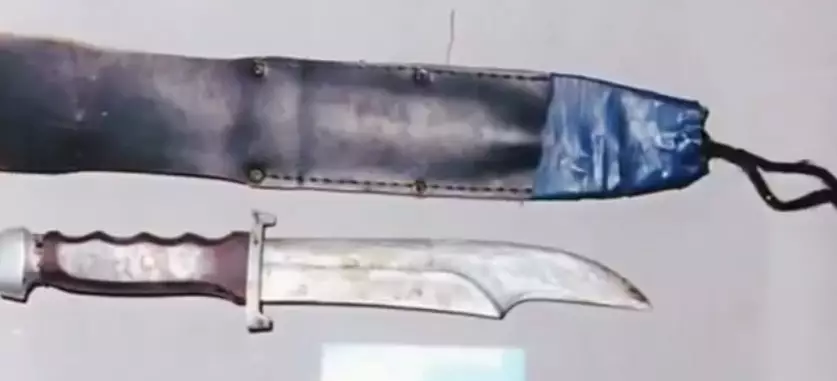
Credit: Channel 9
Once Onions managed to positively identify Milat, police launched a full-scale operation to arrest him. Twenty-three years ago today (22nd May 1994), 50 police officers surrounded his home in Eagle Vale before they knocked down the door and he was apprehended.
Disturbingly, officers found camping equipment and cameras belonging to his victims inside the house.
During his trial, Milat tried to argue that there was no evidence against him and blamed the rest of his family for the murders. Two years later, 27th July 1996, Milat was sentenced for the seven murders as well as the attempted murder and kidnapping of Onions. He was given a life sentence for each victim, which will run consecutively without the possibility of parole.
He was taken to Maitland Gaol, where he was beaten up on the first day by another inmate. He launched a failed escape attempt a year later and was transferred to the maximum security super prison in Goulburn, New South Wales.

Credit: Channel 9
But that was only the beginning of his behaviour behind bars.
He launched his first hunger strike in 2006 when a television and sandwich maker were confiscated.
When prison staff refused to give him a laptop in 2009, Milat decided to slice off his pinky finger with a plastic knife. His intention was to send the finger to the High Court to get its attention about his conditions inside jail.
In a letter posted to a person called E.R. he said: "I could not stop the bleeding, slow consistent drip, drip." He then ate his dinner with one hand before being put in a safe cell to be watched. He complained that the cell was, 'Devoid of anything, a cement box, light on 26/7 [sic], no noise, no idea of time, day or night'.
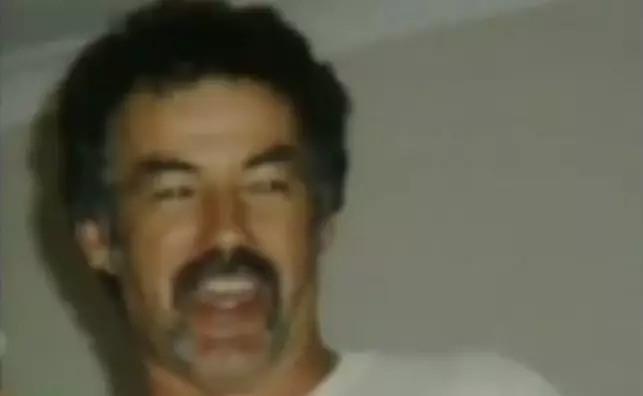
Credit: Channel 9
In another letter that he sent to his nephew, Alistair, it read: "I do battle to cope with this shitty claustrophobic place, no windows, it's like a cement coffin. I suffer badly at times, I think the walls close in, no air, it's a real shit feeling, no I will never plead with the pricks.
"I will send them parts of my hand first, I have been considering this for a while and only need half a reason to show them how I feel with their shithead ideas, there is not much they can do to me anymore and at my age I don't give a fuck."
In 2011, he launched a nine-day hunger strike because he wasn't allowed to play PlayStation games in his cell. Milat claimed his request for the gaming console was justified because it would allow him to 'exercise his mind'.
The serial killer managed to drop 25kgs (3.9 stone) before he gave up. Prison staff were even ready to give food to him intravenously if he passed out.
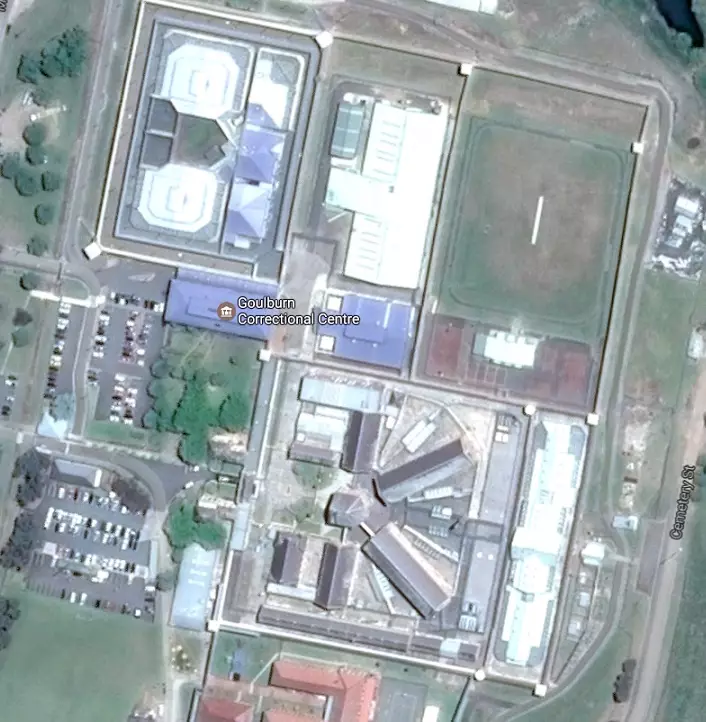
Credit: Google Maps
Despite complaints about his conditions, letters revealed last year showed conditions had improved. He wrote: "During the day, one can wander around the front or back yard. Of course, alternatively, one can elect to go to other areas, library, exercise yards, basketball court, the oval walk-running track." In the letters, Milat said he had hot and cold running water, power points and access to a phone when he wanted.
It costs $824 (£470) per day to keep the 35 inmates, including Milat, behind bars at the Supermax. To do the math for you, that's $301,000 (£171,550) per prisoner, per year. If those figures were the same for Milat's entire incarceration, it will have cost $6,020,000 (£343,972,000) to date.
He reportedly gets several visitors and letters sent to his cell regularly from female fans, particularly from the US. In 2015, letters to his nephew stated: "I get my share of women writing to me - some real good looking ones, too (if it's their photographs they're sending). For some reason, they all say they're around 20 to 30 years old, though their writing suggests they're much older."
There have been several attempts to connect Milat with other missing person cases, including four female backpackers and two nurses. His former lawyer, John Marsden, made a deathbed confession in 2005 that Milat's sister helped him in murdering the two British backpackers, Caroline Clarke and Joanne Walters.
Milat maintains his innocence to this day and claims he was set up.
Featured Image Credit: Channel 9Topics: Australia, Serial Killer